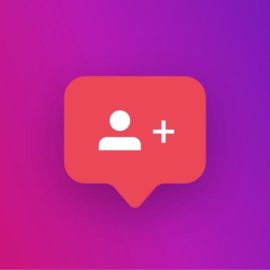Disclosure: I may earn affiliate revenue or commissions if you purchase products from links on my website. The prospect of compensation does not influence what I write about or how my posts are structured. The vast majority of articles on my website do not contain any affiliate links.
I used to be really into Twitter. Up until the end of my sophomore year of college, which was not as long ago as I’d like to believe, I was tweeting regularly. Today, aside from the accessibility of popular users and the ability Twitter gives you to embed yourself into a conversation, I don’t see its usefulness. I feel that much of the novelty that once existed by way of sharing on the micro-blogging platform has been supplanted by Snapchat and Instagram.
Four years ago, I made the decision to buy Twitter followers with the money I received for my birthday. I had a few projects in the pipeline and wanted exposure. I thought I was funny and wanted more people to be in on the joke. I bought 5,000 and waited patiently. I thought maybe it would snowball from there.
At that point, there wasn’t much literature surrounding what buyable social media followers actually are: fake. They are completely inactive1 accounts generated programmatically and then pointed toward a Twitter handle. There weren’t tools like twitteraudit available for people to easily sift through hoards of fans some users appeared to have and separate real from fake. There wasn’t a stigma about buying followers, though it’s an undeniably shallow concept to begin with, because not enough people knew about what was going on. What I mean is that, now, a typical response to me having 5,300 followers would be “You buy followers! I hate you!” whereas back then the “industry” was at the ground floor. I didn’t get much higher than that because, before I knew it, 5000 users with gibberish names and default egg pictures were part of my fan club. They never interacted with my account again.
Buying followers is sometimes referred to as “boosting”. When the followers I bought were pointed to my account, it was immediately clear that they were fake: no pictures, no followers, no tweets. They just boosted my follower count and increase my clout. A Facebook page with 95,000 likes? “It must be legitimate!” A Twitter user with 125k followers: a major influencer. You can buy YouTube views too, though with limited effectiveness (remember the view counter freezing at 301?)
Was having over 5000 followers cool? Maybe. As a freshman in college, I was questioned frequently on how I had so many followers. At best, people thought more highly of me. At worst, it was a talking point. The only problem was, I had nothing to talk about. Barely anybody interacted with my tweets and I had no evidence of past accomplishment. “I was rather funny in high school” didn’t quite explain it.
Eventually, all of my followers disappeared. Messages to the company that sold them went unanswered. I became aware that it was (rightfully so) against Twitter’s terms of use. It wasn’t shameful because realistically no more than a dozen people ever asked me about it. I’ll never truly know the effect it had on peoples’ decisions to follow me. It was a learning experience that makes for a funny story. For others, I can see the benefit especially in supplementing viral growth or establishing a new page. After all, even the early adopter is a bit wary about being fan number one.
Up next: Researching the evolution of and detecting and generating fake Twitter profiles.
1: They were this. Now, fake profiles are much more advanced and seemingly lifelike.




